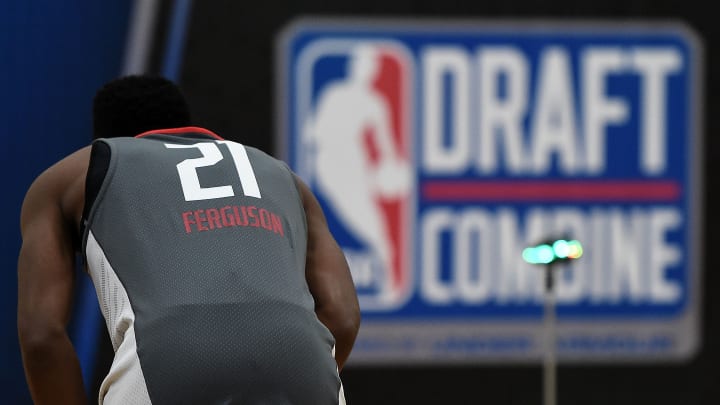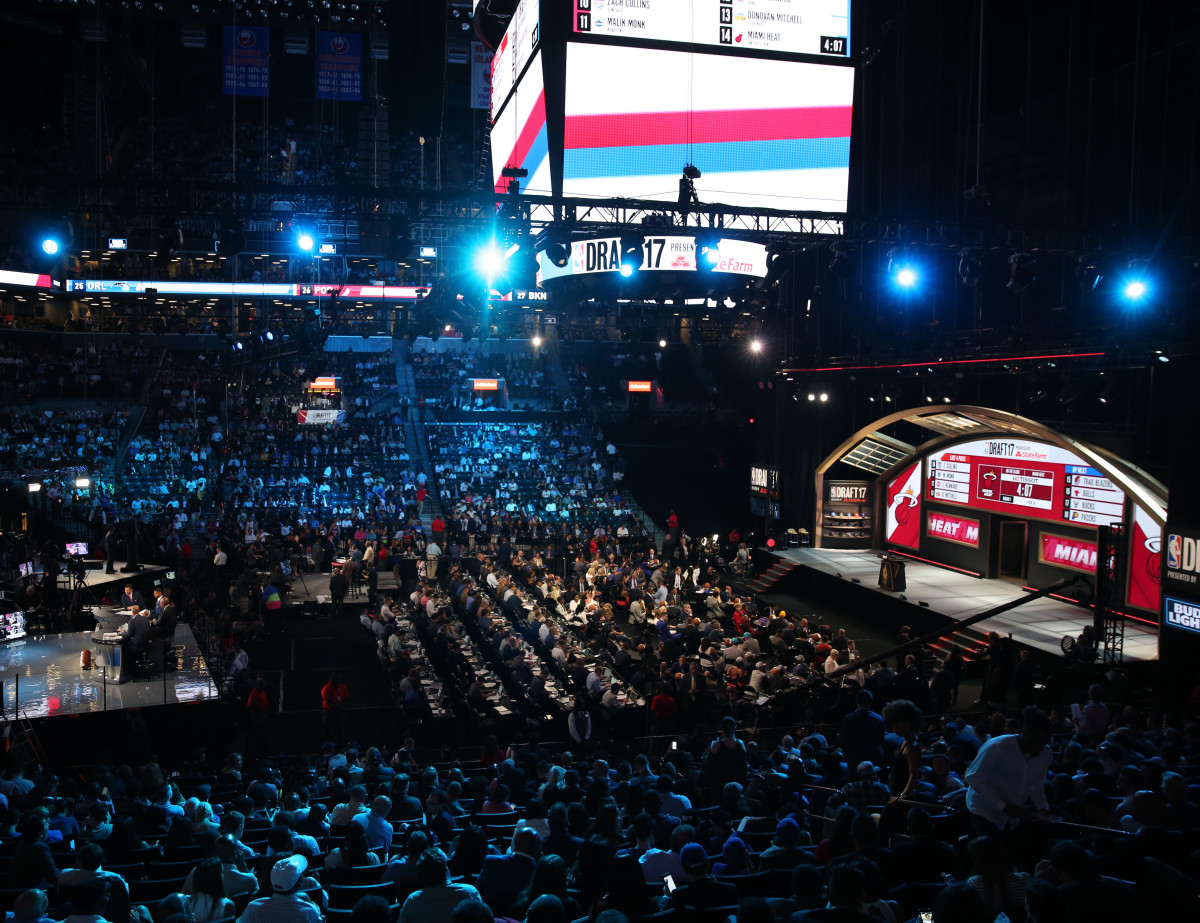The No. 1 Goal of Every Agent in the NBA's Pre-Draft Process

The Crossover presents a series of entries from former player agent, Matt Babcock. Over the remaining weeks leading up to the 2018 NBA Draft, he will provide a unique look behind the scenes of the draft process—offering a glimpse at how agents advise their players and maneuver the pre-draft landscape.
Babcock’s first post details the steps players and their agents follow, from agreeing to a standard player-agent contract following the player’s college season until the NBA Draft Combine. This year’s combine tips off May 16 in Chicago.

The pre-draft process for an agent ultimately comes down to one simple goal: get your player as high up on NBA teams’ mock drafts as possible. Let me explain. Most teams will put together a list of the top 60 draft prospects in their preferred order. Come draft night, some teams will stick strictly to their priority list and select the best player available, but usually teams will put several available players on their big board and the team will need to make a quick decision during the five minutes between first-round picks and two minutes between second-round picks.
As an agent, your goal is set. Now how do we get there? The first step: you need to begin by getting to know your player and his situation fully. Are there any issues that need to be addressed? It could be something relative to the player’s conditioning, medical profile, his character, off-the-court issues or simply basketball related. I have had clients in the past who had issues with prior arrests, failed drug tests and a serious heart condition, to name a few. Many times a player has no significant issues and this makes the job for an agent much easier.
2018 NBA Draft Big Board 7.0: Top 100 Prospects
Either way, a little over two months—from the end of the college season to the draft on June 21—is not enough time to transform any player, but your intent is to do as much as you can. Control what you can control. You need all of this information prepared to make the initial round of calls to teams—sometimes you need to address these issues directly, sometimes indirectly, but always gracefully.
Agents need to survey all 30 NBA teams by calling at least one of the following, if not multiple, executives from each organization: assistant general manager, director of player personnel or director of scouting. The titles vary from team to team but those positions generally rank second, third and fourth in line of the front office. And they’re more valuable resources than lower-level scouts and even the general manager, who truly functions as the “boss”. Those above mentioned upper-level and second-tier executives have a pulse on the entire staff’s opinions of players. Whereas a scout may have a definitive opinion on a player but his role often times is limited to sending scouting reports to the team. Scouts generally do not have much of a voice or influence.
Each team is different regarding how their front office is setup, and the structures often change with hirings and firings each season. Some questions I would ask myself before making calls to teams would be: Who runs their scouting department? Who knows the players in the draft the best? Who has influence with the general manager, or the decision makers of their team? Once you answer those questions and find a solid grasp of the team’s decision-making structure, it’s important to determine who you can trust that will speak with you candidly.

Now you are ready to survey teams for their thoughts on your player. What are his strengths and weaknesses? Will he be in the mix for that team’s pick(s)? Would the team like to bring your player in for a team visit and workout? Where does the team see his market value: Is he a lottery pick, first rounder, second rounder, two-way player or summer league invite? You hope they don’t answer with, “He can make some money somewhere.” This is a polite way of saying he’s not good enough to play in the NBA. It’s imperative to be careful and use judgment on what is real and what is misleading information. For example, Larry Harris and my dad, Dave Babcock, strategically did not bring in Ramon Sessions for a team visit prior to the draft and kept their fondness of him private throughout the entire pre-draft process. They drafted Ramon with the 56th pick in the 2007 NBA draft for the Milwaukee Bucks. Ramon has gone on to have a great career, playing in the NBA for over a decade.
On the flip side, some team personnel are infamous for exaggerating their interest to increase their team’s chances of being able to lure players in for team visits, or perhaps to get commitments for summer league if a player goes undrafted. I would also ask about the team’s overall pre-draft plan. What is the process going to look like for them this year? Will they bring in a lot of players? Will they do any workouts before the combine? It’s necessary to promote your player while also addressing any of the potential issues previously mentioned. But the main goal of these calls is to gather as much information as possible to gauge a team’s interest level in your player. This information is vital in establishing your player’s true market value and organizing your player’s schedule for team visits. I will further explain the team visit phase of the pre-draft process in future entries of this series.

I truly believe an agent needs to manage their player’s market, not create it. That is probably the biggest misconception of an agent’s role, in my opinion. During the recruiting period, agents often lean on selling players and parents on how powerful they are and how much influence they have with teams. There are certain steps that can be taken by an agent to promote a player and improve his market, but there’s really only so much that can be done. B.J. Armstrong, Bill Duffy and Rob Pelinka are a few examples of former players turned agents, but the majority of agents with much relevancy have never played or coached basketball at a high level. NBA front offices are comprised of former players and coaches. It’s only common sense that NBA personnel would not want to be lectured by agents about anything basketball related.
Based on my personal background within basketball, I have always considered myself a “basketball guy” that learned to be an agent. Even with that in mind, I always thought it would be inappropriate and counterproductive to oversell my player’s abilities to teams. As an agent you inherit a player’s market value when you sign them, for better or for worse. Sure, there is some posturing that is necessary, but I believe that the agent’s role is primarily to give guidance to maximize opportunities rather than serve their outcome on a silver platter. An agent provides the most value to a player by being organized and well-informed. Proper negotiating is a key factor in representing players effectively as well, but that comes later on in the process.
2018 NBA Draft Big Board: Top 100 Prospects
During this time, an agent needs to make sure their player is taking care of business, too. He needs to be in tip-top shape in preparation for the NBA Draft Combine and workouts with teams. A lot of money is spent on trainers and training facilities during this time to ensure players have the resources they need to get physically prepared. An agent also needs to set expectations for the player: projected draft range, what to expect at the combine, team visits, interviews and workouts. Positivity is important, but you need to do your best to be realistic at the same time, which can be challenging. This is an emotional and vulnerable time for players who have been working their entire lives to get to this moment.
Part of this preparation is interview training. I would advise players to take an approach of being honest, professional and upbeat. If there are issues that will likely be addressed by teams, how do we answer these questions honestly without hurting the player’s image? I would conduct mock interviews for the players, simulating what to expect. Every team is different with their approach. Some teams will hold an interrogation-like interview to try to gather information or to see how the player will handle the pressure. Other teams will take a more casual approach, just trying to get a feel for the player as a person.
Prior to going on team visits, I would encourage players to be friendly and personable with anyone and everyone ranging from interns to general managers. Nothing but good comes from treating people well. For example, don’t bury yourself in your phone in the car when you’re being picked up from the airport or at dinner. Thank people and tell them it was nice to meet them. Common courtesy, really, but I think it’s important. I would also suggest that players wear collared shirts, nice pants and decent shoes instead of sweatpants and sneakers. Most of these players have never interviewed for a job before, and almost certainly not a job that requires an organization to invest millions of dollars into them.
The overall idea is to help the players present themselves professionally while maintaining sincerity. I was always hopeful these simple lessons could be applied to the rest of their lives and careers. I highly doubt a team would draft or not draft a player strictly based on these things, but if two players are neck and neck the more professional and respectful player just might get the job. Each draft pick represents a significant investment by that team into the player they select. Every detail about the players is dissected carefully. Many teams will hire private investigators to do thorough background checks on the prospects they are considering to draft. Whatever skeletons a player might have in their closet will surely be exposed to the teams. Therefore, control what you can at this point: get in shape, put on a collared shirt and be polite.
T.J. McConnell and Dario Saric Saved the Sixers' Season
There will be 69 players attending the NBA Draft Combine this year. The NBA has done a great job of setting in place a system that empowers the teams to decide on which players are invited. Teams vote as a staff and turn their selections into the league office. This has eliminated, in large part, posturing from agents and college coaches for their players to be invited.
Of course, some agents will say they can influence whether the players get invited or not, claiming they know someone or that they can leverage this or that. But it’s a sham. The combine has a strict protocol. My uncle Pete Babcock—the former general manager of the Atlanta Hawks—was the longtime director of the combine. Even he didn’t have the singular power to get a player invited. If your client is fortunate enough to get invited to the NBA Draft Combine, all the prep work finally comes to fruition. It’s time to perform, handle yourself professionally and take the next step forward in realizing your dream... but this is just the start.
